
Potosí: The Silver City of Bolivia
Discover Potosí, Bolivia's high-altitude gem, known for its rich silver mining history, stunning colonial architecture, and vibrant local culture.
Nestled in the Andes at a staggering altitude of over 4,000 meters, Potosí is a city that holds a rich and remarkable history. Once one of the wealthiest cities in the world due to its vast silver mines, Potosí offers a unique glimpse into Bolivia's colonial past. The iconic Cerro Rico mountain, which looms over the city, is a testament to the region's mining heritage. Here, visitors can take guided tours of the mines to understand the grueling conditions miners have faced over the centuries. The city's historical significance is further highlighted by its well-preserved colonial architecture. Potosí's charming streets are lined with grand churches, colorful buildings, and impressive mansions that tell tales of its opulent past. The UNESCO-listed sites, including the San Lorenzo Church and the Casa de la Moneda, are must-visit landmarks that showcase the city’s artistic and cultural legacy. Despite its historical allure, Potosí is also a vibrant place with a lively local culture. The bustling markets, traditional festivals, and warm hospitality of the locals make it a delightful experience for any traveler. Whether you are a history buff, an adventurer, or someone looking to immerse themselves in local traditions, Potosí offers a rich tapestry of experiences that are both educational and inspiring.
Local tips in Potosi
- Acclimatize to the altitude before exploring Cerro Rico; the air is thin, and taking it slow will help you enjoy your visit.
- Visit Casa de la Moneda to learn about the history of silver mining and coin minting in Bolivia.
- Try local dishes such as 'Pique Macho' at the local markets for an authentic culinary experience.
- Wear layered clothing; Potosí's high altitude means the weather can change rapidly.
- Respect local customs and traditions, especially during religious festivals and in sacred sites.
Neighbourhoods in Potosi
Potosí: The Silver City of Bolivia
Nestled in the Andes at a staggering altitude of over 4,000 meters, Potosí is a city that holds a rich and remarkable history. Once one of the wealthiest cities in the world due to its vast silver mines, Potosí offers a unique glimpse into Bolivia's colonial past. The iconic Cerro Rico mountain, which looms over the city, is a testament to the region's mining heritage. Here, visitors can take guided tours of the mines to understand the grueling conditions miners have faced over the centuries. The city's historical significance is further highlighted by its well-preserved colonial architecture. Potosí's charming streets are lined with grand churches, colorful buildings, and impressive mansions that tell tales of its opulent past. The UNESCO-listed sites, including the San Lorenzo Church and the Casa de la Moneda, are must-visit landmarks that showcase the city’s artistic and cultural legacy. Despite its historical allure, Potosí is also a vibrant place with a lively local culture. The bustling markets, traditional festivals, and warm hospitality of the locals make it a delightful experience for any traveler. Whether you are a history buff, an adventurer, or someone looking to immerse themselves in local traditions, Potosí offers a rich tapestry of experiences that are both educational and inspiring.
When is the best time to go to Potosi?
Iconic landmarks you can’t miss
National Mint of Bolivia
Explore the National Mint of Bolivia, a captivating journey through the history of coinage in the heart of Potosí, rich in culture and artistry.

Potosí - Los Pinos
Discover the serene beauty of Los Pinos Park in Potosí, Bolivia, an ideal escape for nature lovers and cultural enthusiasts alike.

Cafe Pub 4060
Experience the delightful fusion of local flavors and cozy ambiance at Cafe Pub 4060 in Potosi, where every sip and bite tells a story.

Doña Eugenia
Savor the authentic flavors of Bolivia at Doña Eugenia, a must-visit restaurant in Potosí for a delightful culinary experience.
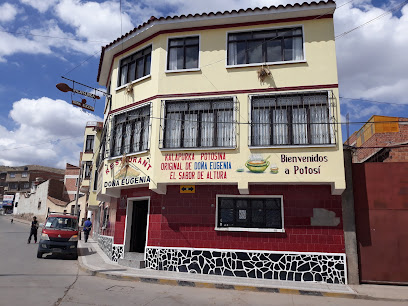
Church of Saint Lawrence of Carangas
Explore the stunning Church of Saint Lawrence of Carangas in Potosí, a breathtaking blend of colonial architecture and rich cultural heritage.

Saint Theresa Museum
Discover the rich history and vibrant art of Bolivia at the Saint Theresa Museum, a cultural treasure in Villa Imperial de Potosí.

Cerro Rico
Discover the rich history and stunning views of Cerro Rico, the legendary silver mountain of Potosí, Bolivia, a must-visit destination for every traveler.

Potosi Mines
Explore the historic Potosí Mines, a UNESCO World Heritage site, where the echoes of a rich mining past resonate through ancient tunnels and stories.

Hostal Colonial
Discover the charm of Hostal Colonial in Potosí, where comfort meets the rich heritage of Bolivia in a welcoming atmosphere.

Hostal Patrimonio
Discover the historic charm and vibrant culture of Potosí at Hostal Patrimonio, your cozy base for adventure in Bolivia.

Torre de la Compañía de Jesús
Explore the majestic Torre de la Compañía de Jesús, an architectural marvel in Potosí, reflecting the city's rich history and cultural heritage.

Koala Cafe
Discover the flavors of Bolivia at Koala Cafe in Villa Imperial de Potosí, where delicious food meets a warm and friendly atmosphere.
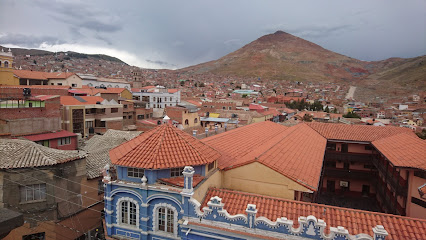
Big Deal Tours
Explore the historic city of Potosí with Big Deal Tours, your expert guide to unforgettable adventures in Bolivia's iconic destination.

Obelisco Potosí
Discover the grandeur of Obelisco Potosí, a stunning landmark that embodies the rich history and culture of Bolivia's imperial city.

Catedral Basílica de Nuestra Señora de la Paz, Potosí
Explore the stunning architecture and rich history of the Catedral Basílica de Nuestra Señora de la Paz, a vital landmark in the heart of Potosí, Bolivia.

Unmissable attractions to see
National Mint of Bolivia
Explore Bolivia's numismatic heritage at the National Mint, a historical gem in Potosí showcasing the evolution of currency and culture.

Plaza de las Banderas Uyuni
Experience the vibrant cultural tapestry of the Plaza de las Banderas in Uyuni, where art, tradition, and breathtaking salt monuments come together.

Flags Plaza
Explore Flags Plaza in Cochabamba, a vibrant tourist attraction filled with lush gardens, cultural monuments, and a serene atmosphere perfect for relaxation.
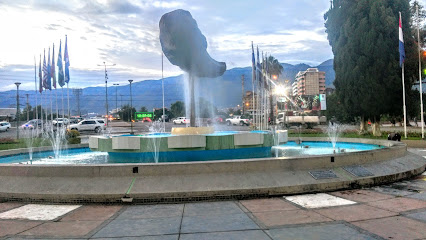
Parque Nacional Amboró
Discover the stunning biodiversity and breathtaking landscapes of Parque Nacional Amboró, a must-visit national park in Bolivia near Samaipata.
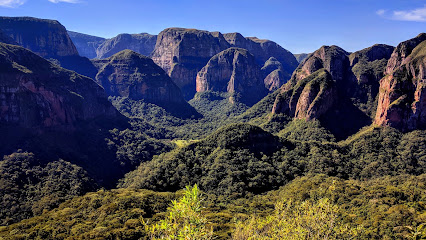
Palacio Portales
Discover the architectural beauty and cultural richness of Palacio Portales in Cochabamba, a captivating destination for history and art lovers alike.

Museo Pedro de Osma
Explore the captivating colonial art collection at Museo Pedro de Osma in Barranco, a must-visit cultural gem in Lima, Peru.

Mercado Central de Potosí
Experience the heart of Bolivian culture at Mercado Central de Potosí, a vibrant market full of local flavors, crafts, and warm hospitality.

Lomas de Arena Regional Park
Explore Lomas de Arena Regional Park, a natural wonder in Santa Cruz de la Sierra, featuring stunning landscapes, diverse wildlife, and adventure opportunities.

Potosí - Los Pinos
Experience the tranquility and natural beauty of Los Pinos, a scenic park in Potosí, perfect for relaxation, family outings, and nature exploration.
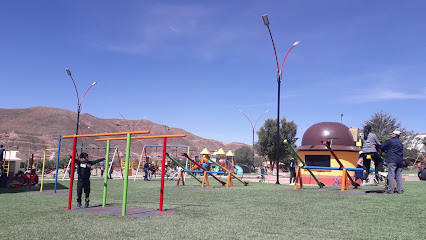
Museo Convento Santa Teresa
Explore the rich heritage of Cochabamba at Museo Convento Santa Teresa, a serene museum blending art, history, and spirituality in a stunning setting.
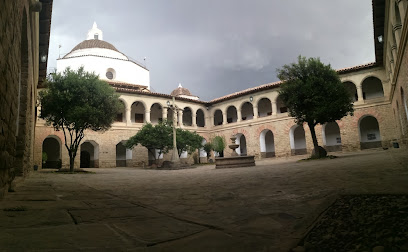
Parque Nacional Madidi
Explore the breathtaking biodiversity and stunning landscapes of Parque Nacional Madidi, a must-visit national park in Bolivia for every nature enthusiast.
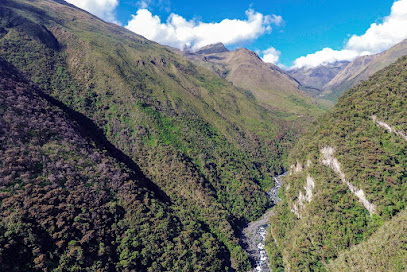
Noel Kempff Mercado Natural History Museum
Explore Bolivia's rich biodiversity at the Noel Kempff Mercado Natural History Museum, a captivating journey through nature's wonders in Santa Cruz.

Church of Saint Lawrence of Carangas
Explore the stunning Church of Saint Lawrence of Carangas in Potosí, a majestic Catholic church rich in history and architectural beauty.

Saint Theresa Museum
Discover the artistic and historical treasures of Bolivia at the Saint Theresa Museum in Potosí, a must-visit cultural attraction for every traveler.

Potosi Mines
Discover the historical depths of Potosi Mines, a UNESCO World Heritage site that reveals Bolivia's rich mining legacy and the resilience of its people.

Essential places to dine
El Fogon
Discover authentic Bolivian flavors at El Fogon in Potosí - where every dish tells a story.

Cafe Pub 4060
Discover Cafe Pub 4060 in Potosi – where delightful flavors meet a cozy atmosphere for an unforgettable dining experience.

PHISQA WARMIS
Savor authentic Bolivian flavors at PHISQA WARMIS – where tradition meets taste in the heart of Potosí.

Restaurant La Esquina
Experience authentic Bolivian cuisine at Restaurant La Esquina, where tradition meets flavor in the heart of Potosí.

Restaurante Tambo Señorial
Experience exquisite Bolivian cuisine at Restaurante Tambo Señorial in Potosí's historic Casco Viejo Plaza.

El Tenedor de Plata
Experience authentic Bolivian cuisine at El Tenedor de Plata in Potosí – where tradition meets taste in a delightful dining atmosphere.

Casona De La Pascualita
Experience authentic Bolivian flavors at Casona De La Pascualita in Potosí—where tradition meets taste in a charming setting.

La Casona 1775
Savor the essence of Bolivian cuisine at La Casona 1775 in Potosí - where tradition meets taste in an enchanting setting.

RESTAURANTE LA TRUFA NEGRA
Discover the exquisite flavors of Bolivian cuisine at Restaurante La Trufa Negra in Sucre – where tradition meets innovation.

El Empedradillo
Experience authentic Bolivian cuisine at El Empedradillo in Tarija—where tradition meets flavor in a warm and welcoming setting.

Restaurant Doña Polonia
Experience authentic Bolivian cuisine at Restaurant Doña Polonia in Villa Imperial de Potosí - a must-visit culinary destination for travelers.
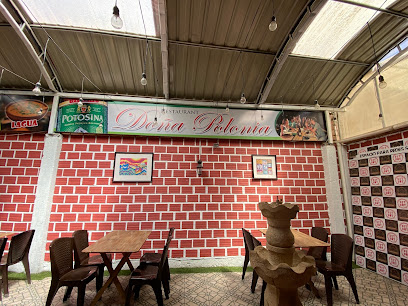
Koala Cafe
Discover the cozy charm of Koala Cafe in Potosí – your go-to destination for delicious meals and refreshing drinks in Bolivia's historic city.

Sabor y Sazón Potosi
Experience authentic Bolivian cuisine at Sabor y Sazón Potosí – where every dish tells a story of tradition and flavor.

Sabor Cochabambino
Discover authentic Bolivian flavors at Sabor Cochabambino in Potosí—a culinary haven for food enthusiasts seeking local delicacies.

Fao Fao China Box
Experience authentic Asian flavors at Fao Fao China Box in Villa Imperial de Potosí - A hidden gem for food lovers!

Markets, malls and hidden boutiques
Minina Accesorios
Explore the vibrant world of fashion accessories at Minina Accesorios, the ultimate shopping destination in Villa Imperial de Potosí.

Cholita Fashion
Experience the rich cultural heritage of Bolivia with Cholita Fashion's unique traditional clothing and vibrant community spirit.

Calzart Bolivia Potosí
Explore the finest collection of footwear at Calzart Bolivia in Potosí—where local style meets quality craftsmanship.

Valeria Tarjetería
Discover unique Bolivian souvenirs at Valeria Tarjetería, a charming gift shop in Villa Imperial de Potosí, showcasing local craftsmanship and culture.

Miniso Potosí
Discover a world of affordable gifts and unique treasures at Miniso Potosí, a must-visit destination for every traveler.

Re! REGALOS
Discover unique Bolivian souvenirs at Re! REGALOS, a charming gift shop in Villa Imperial de Potosí showcasing vibrant local craftsmanship.

EL BARATON
Discover El Baraton, a unique home goods store in Potosí, showcasing Bolivian craftsmanship and culture through a diverse selection of handcrafted items.

TU AMIGA
Experience the unique flavors of Eastern European cuisine at TU AMIGA, a charming Russian grocery store in Potosí.

La Cueva Shop
Explore La Cueva Shop in Villa Imperial de Potosí for vibrant clothing and unique accessories that showcase Bolivian culture and craftsmanship.

Tienda de barrio Dominguito
Explore affordable local treasures at Tienda de Barrio Dominguito, a charming dollar store in Villa Imperial de Potosí, Bolivia.

Chimu Regalos
Discover unique handcrafted gifts and authentic Bolivian souvenirs at Chimu Regalos in the heart of Potosí.

Tienda Bolivia
Explore the authentic flavors of Bolivia at Tienda Bolivia, a must-visit grocery store in Potosí for fresh local ingredients and culinary delights.

ELIZA
Explore Eliza, Potosí's charming gift shop, where local crafts and unique souvenirs bring the essence of Bolivia to life.

Bazar & Jugueteria BABY
Explore Bazar & Jugueteria BABY for unique Bolivian gifts and crafts in the heart of Potosí, perfect for memorable souvenirs.

wwe
Discover trendy youth fashion in Potosi at this vibrant clothing store, blending style and culture for an unforgettable shopping experience.

Essential bars & hidden hideouts
Cafe Pub 4060
Experience the vibrant culinary scene of Potosí at Café Pub 4060, where local flavors meet a cozy atmosphere, perfect for tourists and locals alike.

El Boliche Del Alan
Discover the vibrant nightlife at El Boliche Del Alan in Potosi, where local flavors and a welcoming atmosphere await every traveler.

CABA'S PUB
Experience the vibrant flavors of Bolivia at Caba's Pub, a top gastropub in Potosí, where every dish tells a story and every sip delights the senses.

CASA BONITA POTOSÍ BOLIVIA
Discover the vibrant flavors of Potosí at Casa Bonita, a gastropub that blends local ingredients with innovative culinary techniques.

ATIPICA PUB
Experience the lively ambiance and local flavors at ATIPICA PUB, a must-visit bar in the heart of Potosí, perfect for unwinding after a day of exploration.

La Taberna de Gaia
Discover the flavors of Bolivia at La Taberna de Gaia, a top-rated gastropub in Potosí offering a unique blend of local and international cuisine.

Luna Diabla
Explore the vibrant nightlife of Potosí at Luna Diabla, a lively pub offering great drinks, music, and a welcoming atmosphere for all visitors.

Pud resto bar la Cantarina
Discover the culinary secrets of Potosí at Pud Resto Bar La Cantarina, where traditional flavors meet modern gastronomy in a lively gastropub atmosphere.

GRISSACEOS
Experience the lively atmosphere of GRISSACEOS, a vibrant pub in Villa Imperial de Potosí, perfect for drinks and socializing.

Pub Pueblo Chico
Discover the lively spirit of Potosí at Pub Pueblo Chico, a cozy pub offering delightful drinks and a warm atmosphere perfect for tourists.

Hell's Café Pub
Experience the vibrant nightlife and local culture at Hell's Café Pub, Potosí's premier destination for drinks and entertainment.

Las Rosas PUB-RESTOBAR
Discover the culinary delights of Las Rosas PUB-RESTOBAR, a vibrant gastropub in the heart of Potosí offering a mix of local and international flavors.
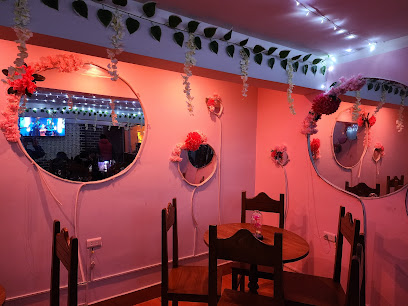
Attos Shisha Pub
Discover the vibrant atmosphere and diverse flavors of Attos Shisha Pub in Sucre, where relaxation meets culinary delight.

Coco Bongo
Experience the vibrant nightlife of Potosí at Coco Bongo, where culinary delights meet lively entertainment in a welcoming atmosphere.

Tapitas Restobar
Discover the flavors of Bolivia at Tapitas Restobar, where traditional cuisine meets modern gastropub flair in Potosí.

Local Phrases
-
- HelloHola
[oh-lah] - GoodbyeAdiós
[ah-dee-ohs] - YesSí
[see] - NoNo
[noh] - Please/You're welcomePor favor/De nada
[por fah-vohr/deh nah-dah] - Thank youGracias
[grah-syahs] - Excuse me/SorryPerdón/Lo siento
[pehr-dohn/loh syehn-toh] - How are you?¿Cómo estás?
[koh-moh ehs-tahs] - Fine. And you?Bien. ¿Y tú?
[byehn. ee too] - Do you speak English?¿Hablas inglés?
[ah-blahs een-glehs] - I don't understandNo entiendo
[noh ehn-tyehn-doh]
- HelloHola
-
- I'd like to see the menu, pleaseQuisiera ver el menú, por favor
[kee-syeh-rah behr ehl meh-noo, por fah-vohr] - I don't eat meatNo como carne
[noh koh-moh kahr-neh] - Cheers!¡Salud!
[sah-lood] - I would like to pay, pleaseMe gustaría pagar, por favor
[meh goos-tah-ree-ah pah-gahr, por fah-vohr]
- I'd like to see the menu, pleaseQuisiera ver el menú, por favor
-
- Help!¡Ayuda!
[ah-yoo-dah] - Go away!¡Vete!
[veh-teh] - Call the Police!¡Llama a la policía!
[yah-mah ah lah poh-lee-see-ah] - Call a doctor!¡Llama a un médico!
[yah-mah ah oon meh-dee-koh] - I'm lostEstoy perdido
[ehs-toy pehr-dee-doh] - I'm illEstoy enfermo
[ehs-toy ehn-fehr-moh]
- Help!¡Ayuda!
-
- I'd like to buy...Quisiera comprar...
[kee-syeh-rah kohm-prahr] - I'm just lookingSolo estoy mirando
[soh-loh ehs-toy mee-rahn-doh] - How much is it?¿Cuánto cuesta?
[kwan-toh kwehs-tah] - That's too expensiveEsto es demasiado caro
[ehs-toh ehs deh-mah-syah-doh kah-roh] - Can you lower the price?¿Puede bajar el precio?
[pweh-deh bah-hahr ehl pree-syoh]
- I'd like to buy...Quisiera comprar...
-
- What time is it?¿Qué hora es?
[keh oh-rah ehs] - It's one o'clockEs la una
[ehs lah oo-nah] - Half past (10)Media hora (10)
[meh-dee-ah oh-rah (dheez)] - MorningMañana
[mah-nyah-nah] - AfternoonTarde
[tahr-deh] - EveningNoche
[noh-cheh] - YesterdayAyer
[ah-yehr] - TodayHoy
[oy] - TomorrowMañana
[mah-nyah-nah] - 1Uno
[oo-noh] - 2Dos
[dohs] - 3Tres
[trehs] - 4Cuatro
[kwah-troh] - 5Cinco
[seen-koh] - 6Seis
[seys] - 7Siete
[syeh-teh] - 8Ocho
[oh-choh] - 9Nueve
[nweh-veh] - 10Diez
[dyehs]
- What time is it?¿Qué hora es?
-
- Where's a/the...?¿Dónde está...?
[dohn-deh ehs-tah] - What's the address?¿Cuál es la dirección?
[kwal ehs lah dee-rehk-syon] - Can you show me (on the map)?¿Puedes mostrarme (en el mapa)?
[pweh-dehs mohs-trar-meh (ehn ehl mah-pah)] - When's the next (bus)?¿Cuándo es el próximo (autobús)?
[kwan-doh ehs ehl proh-ksee-moh (ow-toh-boos)] - A ticket (to ....)Un boleto (a ....)
[oon boh-leh-toh (ah)]
- Where's a/the...?¿Dónde está...?
History of Potosi
-
Potosi was founded in 1545 after the discovery of rich silver ore in the Cerro Rico (Rich Hill). The city rapidly grew due to the influx of Spanish settlers and indigenous laborers, making it one of the largest and wealthiest cities in the world during the 16th century.
-
During the 16th and 17th centuries, Potosi was the epicenter of the world's silver production. The silver extracted from the mines was a major contributor to the Spanish treasury and played a crucial role in the global economy, especially in trade with Asia through the Manila Galleons.
-
The Spanish colonial authorities implemented the Mita system, a form of forced labor that required indigenous people to work in the mines. This system was brutal and led to significant loss of life among the indigenous population due to harsh working conditions and diseases.
-
The Casa de la Moneda (Royal Mint) was established in 1572 to mint the silver extracted from the Cerro Rico. The mint produced millions of silver coins that circulated around the world, known as 'pieces of eight.' The building itself is an architectural gem and now serves as a museum.
-
By the late 18th century, silver production in Potosi began to decline due to the depletion of easily accessible silver veins and the increasing cost of extraction. This led to economic downturn and a significant decrease in the city's population.
-
Potosi played a role in the Bolivian War of Independence against Spanish rule. The city changed hands multiple times between royalist and patriot forces. The struggle culminated in Bolivia gaining independence in 1825, with Potosi becoming part of the new nation.
-
Today, Potosi is a UNESCO World Heritage site, known for its rich history and well-preserved colonial architecture. While the silver mines are no longer as productive, mining remains an important part of the local economy. Tourism has also become a significant industry, with visitors drawn to the city's historical significance and cultural heritage.
Potosi Essentials
-
Potosi is located in the southwestern region of Bolivia. The nearest major airport is El Alto International Airport in La Paz, approximately 530 kilometers away. From La Paz, you can take a domestic flight to Sucre and then a bus or taxi to Potosi, which is about a 3-hour drive. Alternatively, you can take a direct bus from La Paz to Potosi, which takes around 8 to 10 hours. Other options include buses from major cities like Sucre, Uyuni, and Cochabamba.
-
Potosi is a relatively small city, and many of its attractions can be explored on foot. For longer distances, taxis are readily available and affordable. There are also local buses and minibuses (trufis) that connect different parts of the city and its outskirts. Renting a car is an option, but be aware that driving conditions can be challenging due to the high altitude and winding roads.
-
The official currency in Bolivia is the Boliviano (BOB). Credit cards are accepted in many hotels, restaurants, and shops in Potosi, but it is advisable to carry cash, especially when visiting smaller establishments or markets. ATMs are available in the city, but it's a good idea to withdraw sufficient cash before traveling to more remote areas.
-
Potosi is generally safe for tourists, but like any other destination, it’s important to take standard precautions. Avoid walking alone at night in unfamiliar areas and be cautious of your belongings in crowded places. Certain neighborhoods, particularly those on the outskirts, have higher crime rates, so it's best to stay within well-populated and tourist-friendly areas. Always use registered taxis and avoid displaying valuable items openly.
-
In case of an emergency, dial 110 for police assistance and 118 for medical emergencies. The city has several medical facilities, including the Hospital Daniel Bracamonte. It's highly recommended to have travel insurance that covers medical emergencies. For minor health issues, pharmacies are available throughout the city where you can find over-the-counter medications.
-
Fashion: Do dress in layers, as the weather can change rapidly due to the high altitude. Don’t wear overly casual or revealing clothing in religious or formal settings. Religion: Do respect local customs and traditions, especially when visiting churches. Public Transport: Do be polite and offer your seat to elderly or pregnant passengers. Don’t eat or drink on public transport. Greetings: Do greet people with a handshake and maintain eye contact. Eating & Drinking: Do try local dishes like Salteñas and Pique a lo Macho. Don’t refuse food or drink offerings, as it can be considered impolite.
-
To experience Potosi like a local, visit the bustling Mercado Central where you can buy fresh produce and traditional Bolivian goods. Engage with locals, as they are often eager to share stories about the city’s rich history. Don’t miss a tour of the Cerro Rico mines to understand the city’s mining heritage. For a unique experience, visit the Casa Nacional de la Moneda, which offers a deep dive into the city’s role in global silver production.
Trending Landmark in Potosi
-
National Mint of Bolivia
-
Potosí - Los Pinos
-
Cafe Pub 4060
-
Doña Eugenia
-
Church of Saint Lawrence of Carangas
-
Saint Theresa Museum
-
Cerro Rico
-
Potosi Mines
-
Hostal Colonial
-
Hostal Patrimonio
-
Torre de la Compañía de Jesús
-
Koala Cafe
-
Big Deal Tours
-
Obelisco Potosí
-
Catedral Basílica de Nuestra Señora de la Paz, Potosí
Nearby Cities to Potosi
-
Things To Do in Sucre
-
Things To Do in Uyuni
-
Things To Do in Tarija
-
Things To Do in Cochabamba
-
Things To Do in Santa Cruz de la Sierra
-
Things To Do in La Paz
-
Things To Do in San Pedro de Atacama
-
Things To Do in Iquique
-
Things To Do in Arica
-
Things To Do in Tacna
-
Things To Do in Copacabana
-
Things To Do in Salta
-
Things To Do in Puno
-
Things To Do in Antofagasta
-
Things To Do in Arequipa













